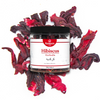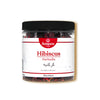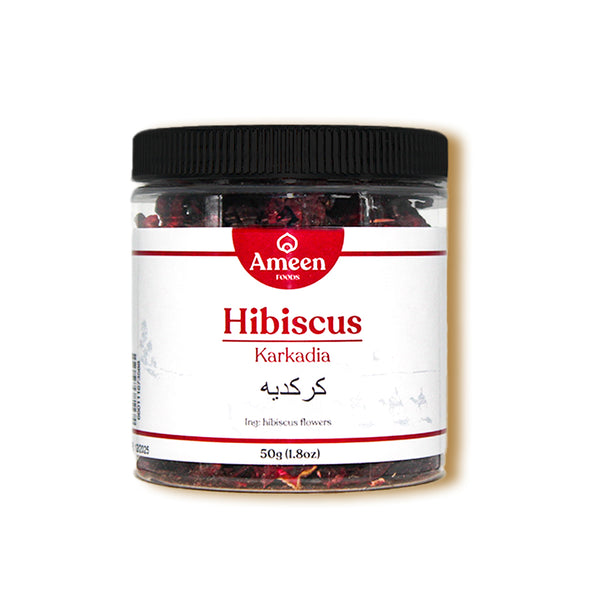Hibiscus, scientifically known as Hibiscus sabdariffa, is a flowering plant celebrated for its vivid crimson petals and tangy flavor. Native to tropical and subtropical regions around the world, particularly Africa, the Caribbean, and Asia, this vibrant flower has gained global popularity for its use in teas, culinary creations, and traditional wellness practices.
Culinary & Wellness Appeal of Hibiscus
Hibiscus is most famously brewed into a ruby-red herbal tea with a bright, tart flavor reminiscent of cranberries. Its bold taste makes it a favorite in iced teas, cocktails, syrups, and jams. Beyond its culinary charm, hibiscus petals are also valued in wellness traditions for their refreshing and invigorating qualities, making them a staple in herbal infusions and natural remedies.
Why Choose Hibiscus?
-
Flavor Profile: Tart, fruity, and floral with a cranberry-like zing.
-
Uses in Cooking:
-
Herbal Teas: Steeped hot or cold for a vibrant, caffeine-free brew.
-
Syrups & Sauces: Adds tang and color to dressings, glazes, and desserts.
-
Natural Coloring: Used to give foods and drinks a rich magenta hue.
-
-
Aromatic & Decorative: Dried hibiscus petals can also be used in potpourri or as a garnish.
Botanical and Cultural Significance
-
Botanical Name: Hibiscus sabdariffa
-
Common Names:
-
English: Hibiscus, Roselle, Red Sorrel, Flor de Jamaica
-
Arabic: كركديه (Karkadeh)
-
Hindi: गुड़हल (Gudhal), जास्वंद
-
Spanish: Flor de Jamaica
-
French: Bissap, Oseille de Guinée
-
Swahili: Mchicha wa Kizungu
-
Other: Zobo, Karkade, Rozelle, Ambari
-
Discover the Beauty of Hibiscus
From refreshing tea to vibrant culinary creations, Hibiscus adds a burst of flavor and color to your daily routine. Embrace its global heritage and enjoy a touch of natural brilliance with every petal.





